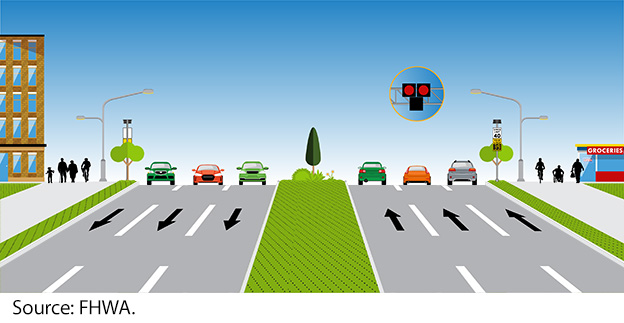The term “Complete Street” is a relatively new term of art that emerged in the early 2000s as a concept in public roadways. The Complete Streets movement is a transportation policy and design approach that aims to create safe, accessible, and convenient streets for all users, including pedestrians, bicyclists, motorists, and transit riders of all ages and abilities. The concept recognizes that streets should be designed to accommodate a range of transportation modes, and should be safe and accessible for everyone, regardless of age, ability, or mode of transportation.
The Complete Streets concept has gained popularity in recent years as cities and towns across the country have sought to improve safety and accessibility for all users of public roads. Many cities and states have adopted Complete Streets policies and guidelines to ensure that new road construction, rehabilitation, and maintenance projects prioritize the needs of all users. Complete Streets policies often require that new road projects include sidewalks, bike lanes, crosswalks, and other infrastructure improvements to make streets safer and more accessible for everyone.
Readings:
U.S. Department of Transportation: Federal Highway Administration
State of Michigan Complete Streets Program









